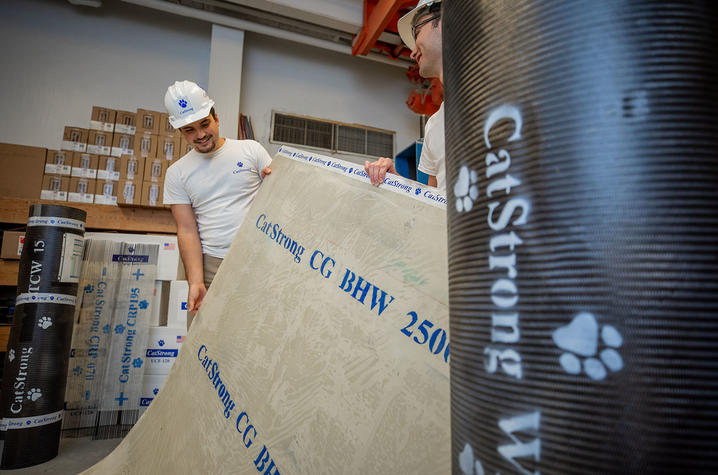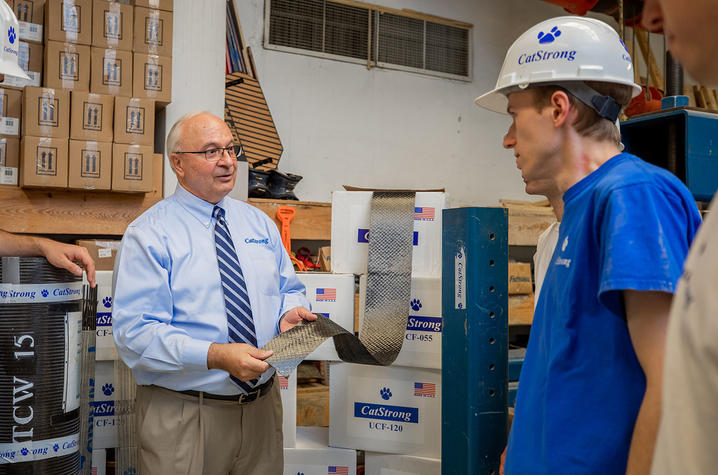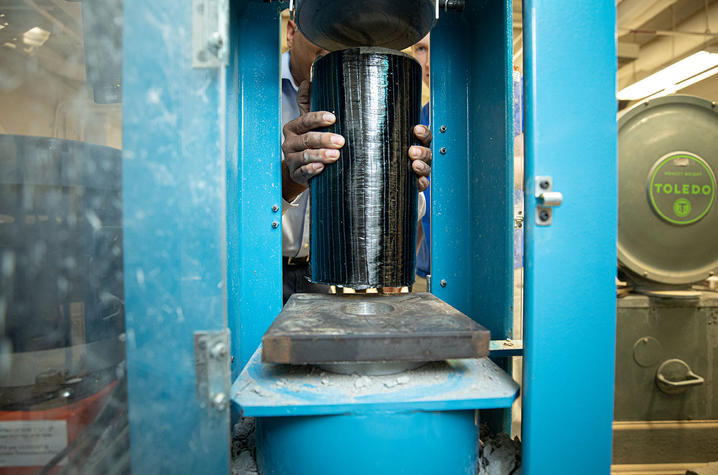How UK Engineering is Using Hemp to Repair Deteriorating Kentucky Bridges
LEXINGTON, Ky. (Nov. 18, 2019) — Bridges are a crucial component of Kentucky's infrastructure — providing access between regions and cities and linking workers to jobs. But as traffic continues to increase, bridges across the state are aging at an accelerated pace.
According to the American Road & Transportation Builders Association, 7% of Kentucky's bridges are classified as "structurally deficient." What exactly does that mean? Well, more than 1,100 of them are in poor condition.
“Every bridge in the nation is inspected for deficiencies, at a minimum, once every two years. Bridges with known issues are inspected more frequently to ensure public safety," Issam Harik explained. "Each bridge has to be assessed individually in order to understand whether repair is needed.”
When a repair is needed — that's where Harik comes in. As a professor in the Department of Civil Engineering at the University of Kentucky, he offers much more than advice.
Since 1994, Harik has been at the helm of a group of students researching the deployment of fiber reinforced polymer (FRP) composites in bridges and buildings. Through funding from the Department of Defense, Federal Highway Administration, the Kentucky Transportation Cabinet, The National Academies and the Kentucky Science and Engineering Foundation, he and a team of talented students developed innovative products — dubbed CatStrong — for restoring bridges.
When asked why the name “CatStrong"? “Well, I am proud of our Wildcat legacy, and the products are very, very, strong,” Harik said.
Currently, CatStrong rod panels and fabrics come in different strengths. The strongest version can resist 195,000 pounds per foot of width — yet can be easily applied by one worker.
“The CatStrong family of products were developed to meet the repair needs of bridges when no other products were available on the market that satisfy the retrofit requirements," Harik explained. "All CatStrong products are tested experimentally and/or via computer models in order to assess their strengths and limitations."
Using remarkably resilient carbon fiber fabrics, panels and wraps, CatStrong has successfully restored more than 35 bridges by strengthening beams, columns, piles and walls. The lightweight product has yielded impressive results due to its ease of application.
“Whether in a bucket or platform truck or on special scaffolding over rivers, valleys, roadways, etc., this helps significantly with reducing the number of man hours and traffic control — which is usually the biggest expense on a job," Abheetha Peiris explained.
Peiris, a researcher at the Kentucky Transportation Center and one of Harik's former doctoral students, supervises the repair projects.
Despite unprecedented success, CatStrong has been on a quest to find an even more reliable resource. When introducing a new addition to their family of products, Harik leaned on a growing industry in the Commonwealth — the hemp industry.
As part of an experimental study, the team recently repaired one of the piles on the KY 32 bridge over Blaine Creek in Lawrence County using hemp — marking the first time the natural fiber has been used as a construction material for bridge repair.
Hemp, which is biodegradable and has a small carbon footprint, offers many advantages. "The limitations are low strength, incompatibility with existing resins, manufacturing processes and it is seasonable," Harik continued. "Some of the limitations can be overcome with ongoing and future research."
If the timeline for a project is five days, Harik says the majority of the time will be spent preparing. “Once the structural member section is built back to its original shape, we mix a two-part resin or paste and spread it on the surface. Then we press CatStrong into it, add another layer of paste over it and that’s it. Once applied, it will gain 80% of its strength within 24 hours.”
Harik, who wants to give credit where credit is due, admits he doesn't physically create the CatStrong wraps. Instead, that's the work of dedicated students — who he lovingly refers to as "minions." On any given day, you will find them working busily in the Structures Lab on campus.
From design to development, students are involved in every aspect of CatStrong. Their passion for the product — and its ability to make Kentucky bridges safer — is undeniable. “It is very gratifying and exciting to analyze a product, fabricate it, test it and see it deployed in the field to solve a real problem — in short, it is amazing,” Ethan Russell, a UK engineering student, said.
For future deployments, CatStrong will experiment with plant, instead of epoxy, based resins to produce entirely plant-based biodegradable, flexible, lightweight and re-useable wraps.
The primary objective in the KY 32 bridge — and any repair project — is to optimize the use of taxpayers' funds while enhancing the state's infrastructure.
"The lessons learned from each project are used in future projects to upgrade and extend the life of bridges and buildings," Harik said. "None of the success achieved in these repair projects would have been possible without collaboration between UK, sponsoring agencies and industry."
As the state’s flagship, land-grant institution, the University of Kentucky exists to advance the Commonwealth. We do that by preparing the next generation of leaders — placing students at the heart of everything we do — and transforming the lives of Kentuckians through education, research and creative work, service and health care. We pride ourselves on being a catalyst for breakthroughs and a force for healing, a place where ingenuity unfolds. It's all made possible by our people — visionaries, disruptors and pioneers — who make up 200 academic programs, a $476.5 million research and development enterprise and a world-class medical center, all on one campus.







